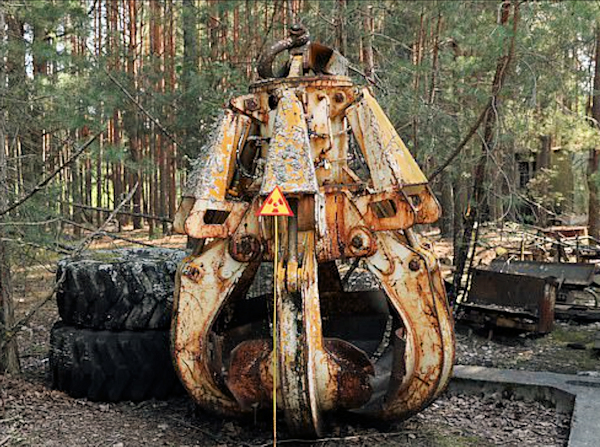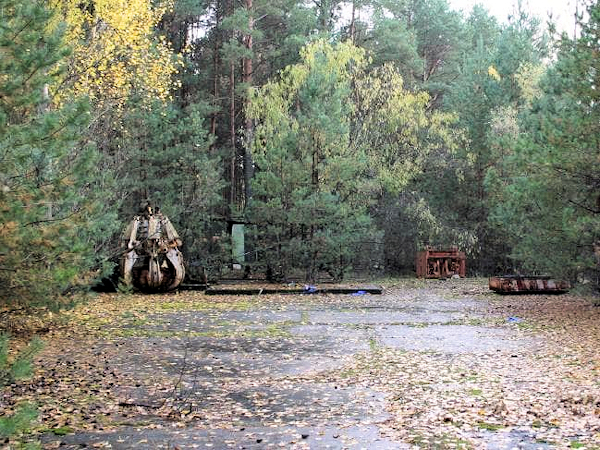The Claw, a hydraulic orange peel grapple, used in the dismantling and clean-up of the Chernobyl Nuclear power plant now sits abandoned in the woods near Pripyat, Ukraine, a ghost city which was evacuated after the 1986 disaster. It still emits deadly amounts of radiation.
As reported by News.com.au, workers, unsure of where to leave the highly radioactive grapple, dumped it in a remote wooded area, in hopes it would never be found — it was simply deemed too dangerous to leave anywhere else.
But while the Claw isn’t easy to find, a handful of official guides know where it’s located. Here’s what happened when Sydney archaeologist and Chernobyl expert Robert Maxwell got as close as you can get to the most dangerous thing in the zone.
“The three rooftops alongside the exploded reactor four were, at the time, the most lethally dangerous places on earth. One of the rooftops was measuring in the tens of thousands of roentgen, which was the measurement of radioactivity back then,” Mr Maxwell said.
The Claw, mounted on a crane, was used to help clean up the radioactive graphite and material that exploded out of reactor four and onto the neighboring roofs of the power plant.
“When reactor four of Chernobyl exploded, it liberated the lid of the reactor vessel. This 6-10 tonne concrete roof was blown into the air and then landed vertically into the hole. All of the control rods, the graphite, the fuel rods and everything else blew out of the reactor and landed on the rooftops nearby.
“So imagine someone trying to stand on a rooftop that was so radioactive that it could give you such acute radiation sickness that you basically cook yourself and die. So this claw was deeply involved in all the intensely radioactive material as it moved the material back into the core. To say the Claw is highly radioactive and dangerous is not an exaggeration.”
“When I had my encounter with the Claw — let’s just say it was screamingly radioactive,” Mr Maxwell said.
Mr Maxwell decided to put his hand inside the Claw to get a reading, which is something he doesn’t recommend anybody should do.
“There are many things in the zone today for which contact for any prolonged period will definitely kill you, and the Claw is definitely the most dangerous of all because it’s not roped off or inaccessible like other hazards. It’s essentially just sitting in a forest clearing for the rest of time. It’s severely, potently lethal,” Mr Maxwell said.
“I put my hand inside it because I wanted to get a reading with the Geiger counter. Was I worried? Yes, but I was worried the whole time. The guide kept saying to me, ‘Do not touch it, do NOT touch it!’ So I just put my hand in very quickly and took it out again. It wasn’t easy to get a reading because the Geiger counter was climbing so fast and, because it’s a digital reading, every time I took a photo it was between digits, so I kept getting a blank screen. Eventually I got some numbers, we yelled ‘Now!’ and I pulled my hand out,” Mr Maxwell said.
“The one photo that came out readable was showing 39.80 microsieverts per hour (uSv/h). The average background radiation in Sydney is usually something in the region of 0.17 uSv/h. So the Claw is magnitudes higher and releases something in the region of 950uSv of radiation a day. Any length of time spent in the company of the Claw is extremely dangerous. We were in and out very fast and made sure to keep a good distance between us and it except for the photography.
“The Claw was so unusual and so little seen that I was taking several photos. Then my guide was taking photos of me taking photos, and both my guide and driver were taking photos themselves because it was the first time they’d seen the Claw in person. It was a bit like seeing a mythical creature.”


